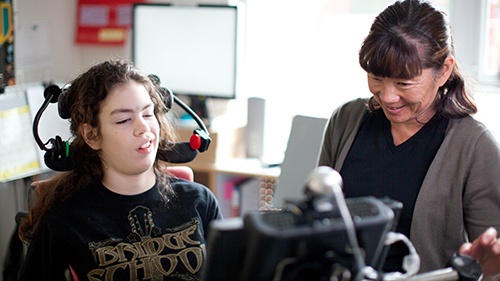

Goal-setting is a person-centered process. All goals eventually work toward helping students become self-determined participants at school, home and in the community.
“…desired outcomes in AAC are not achieved through the learning of symbols, the production of utterances or the use of a speech generating device (SGD). Instead, AAC interventions are only successful to the degree to which individuals can productively use AAC strategies, techniques and technologies to participate actively in family and community life, develop and maintain friendships, garner self-esteem, achieve personal goals, gain employment, learn to read and write, get an education, take on adult roles, become productive members of their families, contribute to their communities and self-actualize.” (Blackstone & Wilkins, 2009).
Although this section may appear to focus primarily on the development of communicative competence skills over time, the Bridge School staff work to integrate each student’s skills’ development across domains throughout the school day. Discrete skills are not taught in isolation or in pull-out therapy sessions. IEP goals are often complex and designed to target many competencies within daily school and social activities. In this section you will find:
Blackstone, S. and Wilkins, D. (2009). Exploring the importance of emotional competence in children with complex communication needs. Perspectives on Augmentative and Alternative Communication, 18, pp78-87.